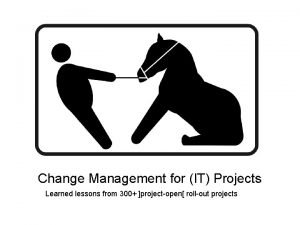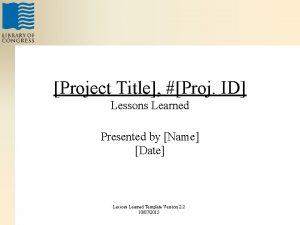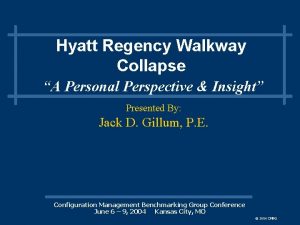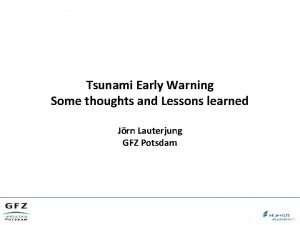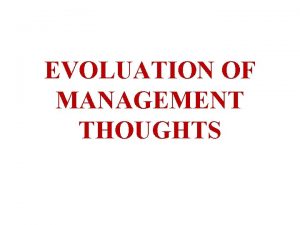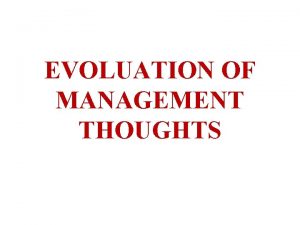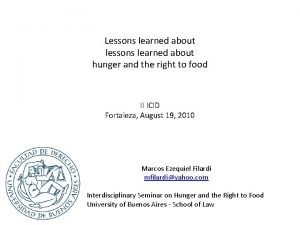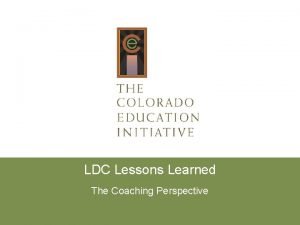Disaster Management Some Thoughts and Lessons Learned Lessons







- Slides: 7

Disaster Management Some Thoughts and Lessons Learned

Lessons Learned (Pre and post October 08, 2005) • All hazards are natural and most disasters are man made. • There is a definite relationship between demographic changes, underdevelopment (governance), environmental degradation, and occurring disasters. That relationship needs to be understood on scholarly grounds and for that educational institutions needs to be involved and funding should be available for relevant researches. • Timely access to information is a key issue in DM, hence needs to be available to all actors and stakeholders. A centralized system for info collection and dissemination, employing all means, needs to be established

…Lessons Learned • Land sliding, timber business and consumerism are interlocked and takes its toll on environmental degradation which probably means more disasters; so a vicious cycle • When resort to out sourcing, due to lack of in-house expertise, work load or for any other reason for a specific tasks results in suffocation of in-house expertise. And it is also a reality that at the same time, availability of in-house expertise, is not always possible • Institutional Donors, most of the times are devoid of mechanisms that can otherwise bring more scientific and realistic analysis of the society.

…Lessons Learned • Emergency and development interventions, for their effectiveness, should be grounded in information and its analysis. • Establishing cause-effect relationship and improving the systems in making laws that are close to scientific realities, is necessary. • Monitoring of disasters is the first step in preparation of the disasters • Communication of scientists with political/community leadership helps in disaster mitigation • Housing and rehabilitation should be linked with restoration of livelihood and that should take vulnerable groups into account as they are the usual left outs

…Lessons Learned • Focus on most vulnerable is most important. In disaster everybody is hit but there is a differential impact depending on class of the victim • In the aftermath of any disaster, the “tyranny of urgent” prevails and gender concerns are overlooked or dismissed as irrelevant. • Women and children are particularly affected by disasters, accounting for more than seventy five percent of displaced people. Women are disproportionately effected by disasters as a result of their gendered status in society. • In a disaster, irrespective of the losses and trauma, women faced, they usually still have the responsibility of care taking.

…Lessons Learned • Women are found to be strong advocates for preparedness measures at the community level because they understand what disaster means to the day-to-day realities of life. • Women are found to me most effective in community mobilzation/organising for response; the quality that could be effective in disaster preparation/mitigation and other development related issues • Post disaster trauma care is essential and it is important to look as psycho-social problems Like women, men are also prisoners of specific gender roles and may suffer other ‘types’ of disadvantages. Example: usually they do not know cooking and seems helpless when received food items • Traditionally seen as providers and protectors, in times of disaster, men struggle with the feelings of inadequacy and failure.

…Lessons Learned • The most important issue deserving emphasis is that contrary to popular perceptions; women are not helpless victims but display great strength in extreme situations. They possess skills, resilience and extensive knowledge about appropriate coping strategies, but their capacity remains largely invisible • Post disaster media coverage is not adequate enough. Therefore by looking just at media coverage one could not construct “before and after scenarios • The desire for visibility, at times, eclipse the relief and rehabilitation
